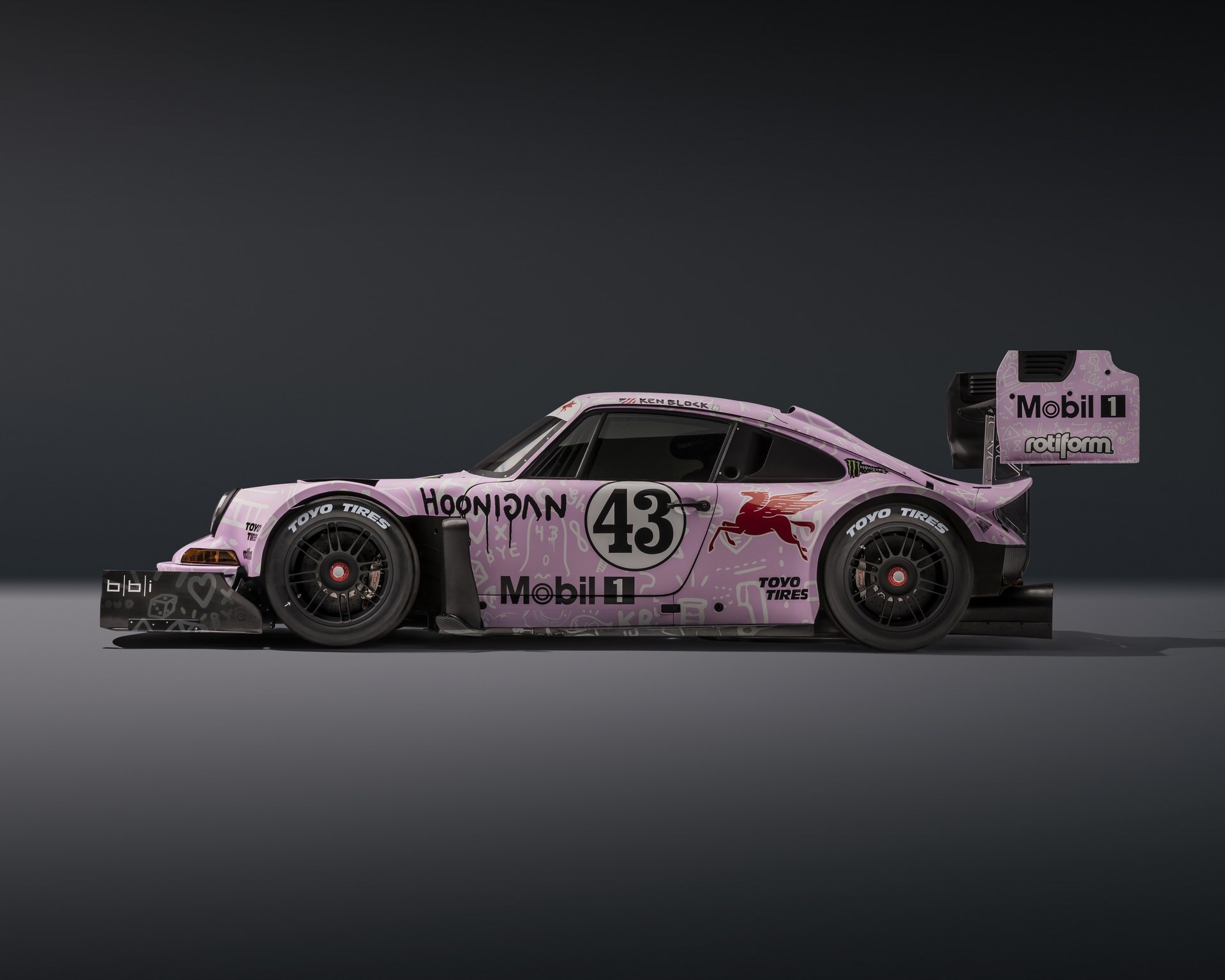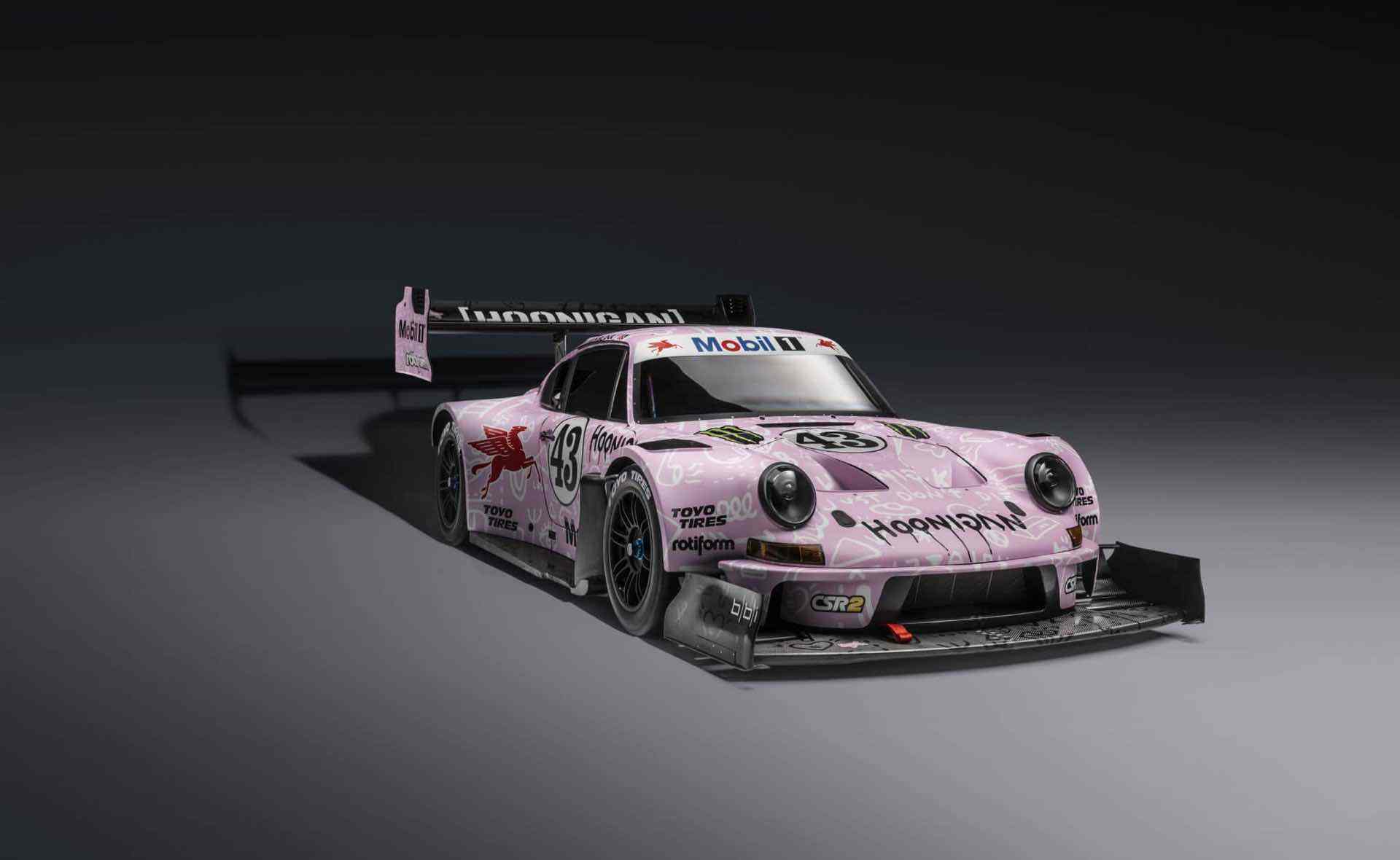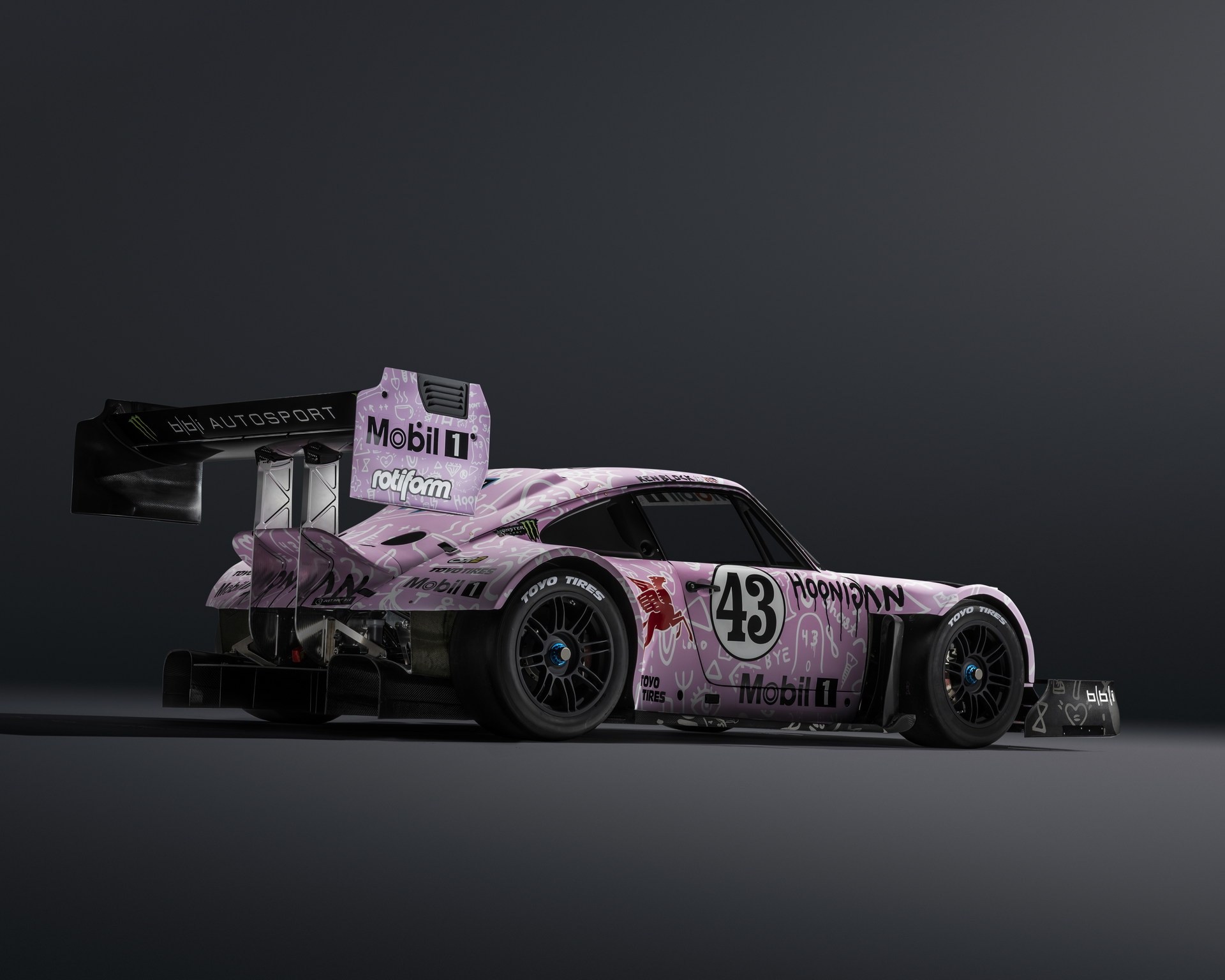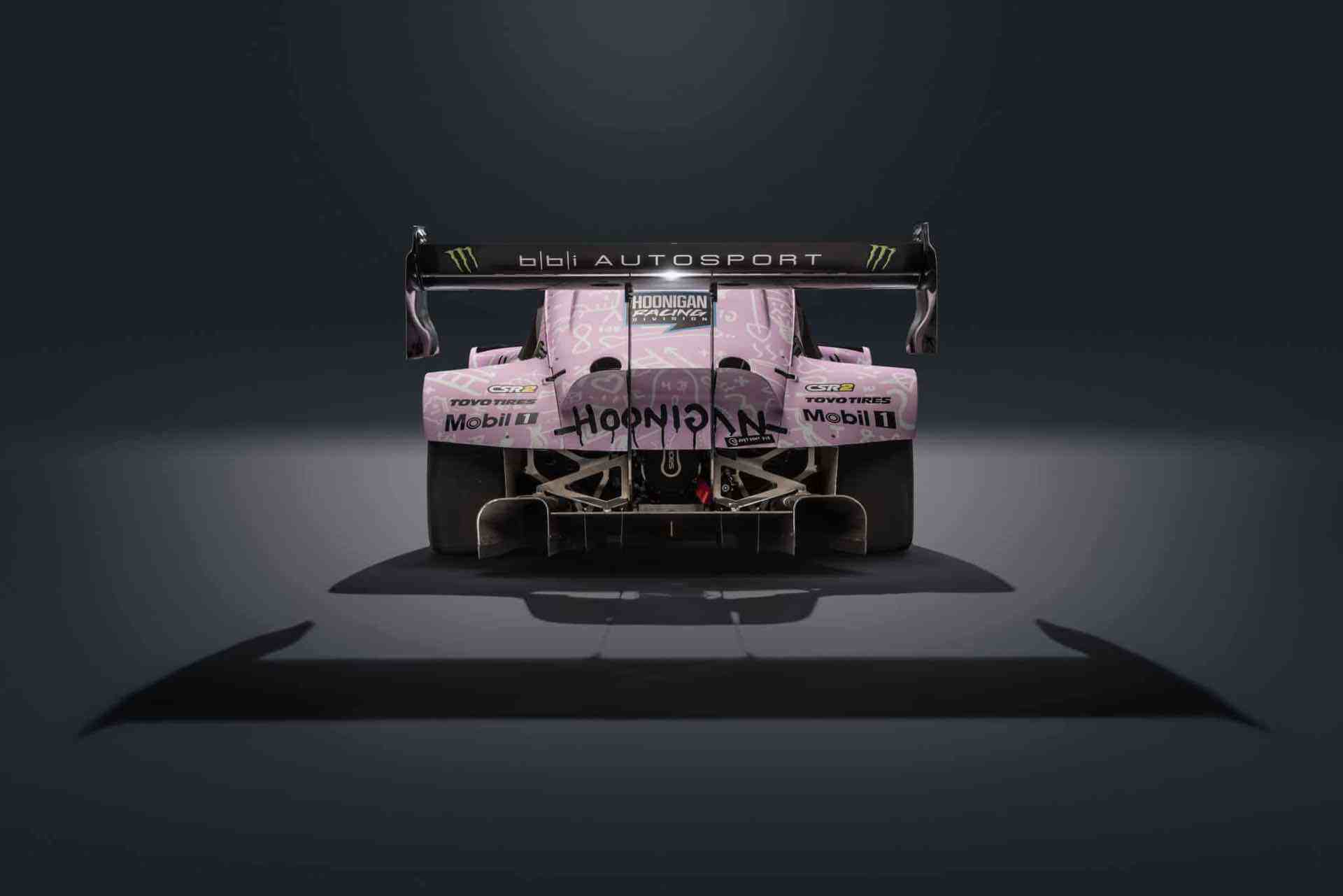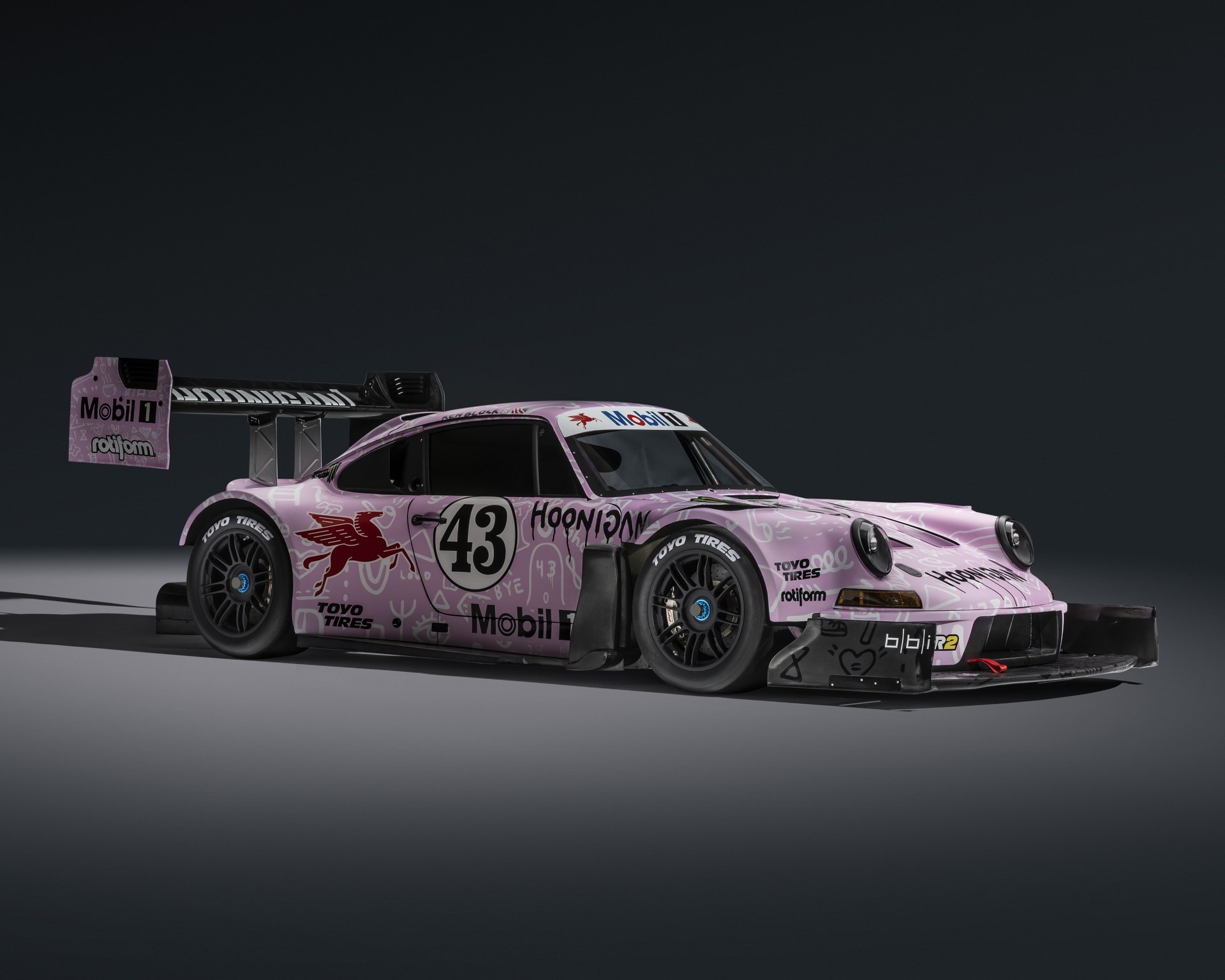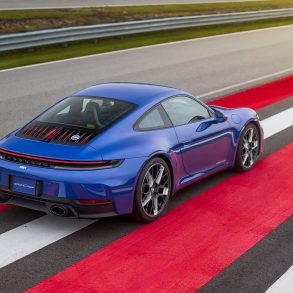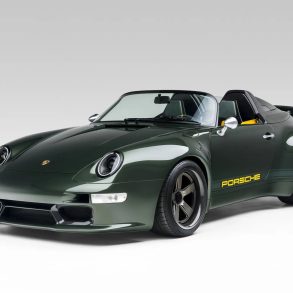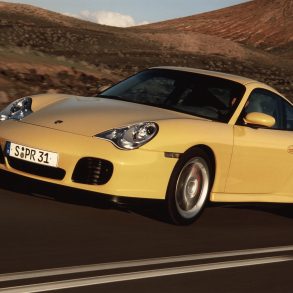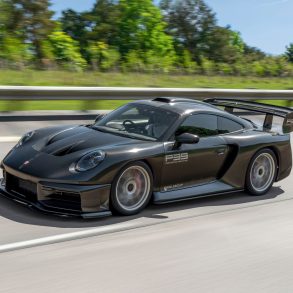Note: All images in this article have been provided by Hoonigan Racing and are either official renders or actual pictures of the car itself.
If you’ve been around the internet with even a molecule of interest in cars or motorcycles, chances are you’ve heard of Ken Block. But if you’re a fan of DC Shoes, you’ve probably also heard of Ken Block. That is because Ken, being a California native, was out and about a lot, either walking or on a skateboard, and he wanted to have a more comfortable shoe. He co-founded DC Shoes in 1994 with his friend Damon Way, and to say that the company took off is fairly accurate.
Ken sold his ownership of DC Shoes in 2004, after spending a lot of his free time with or around rally cars. He had found a new passion, and since hitting the scene in 2005, he has become a phenomenon in the American rally scene. He has even competed internationally in FIA WRC events and used his extensive rally knowledge (not to mention his extensive bank account) to form Hoonigan Industries—a company focused on extreme motorsport and cars.
Throughout the years, he also started the Gymkhana series of driving set courses at insane angles and high speeds, as well as partnering with multiple companies to build the “Hoon” series of cars. Partnering with Ford Performance, he has had two versions of the Hoonicorn, both of which are based on the body shape of a 1965 Ford Mustang.
The first one, naturally aspirated, chucked out 850 HP and had AWD, a lightweight spaceframe, a sequential gearbox, and the capacity to accelerate from 0 to 60 in just about 2 seconds—if Ken could keep the tires from spinning up.
The second Hoonicorn, the Hoonicorn RTR, replaces the 410 ci Ford V8 from the original Hoonicorn with one that has visited Roush, with two Garrett turbos bolted to it, a full Motec motorsports ECU, and a Switzer Dynamics intake manifold to handle the PSI needed to produce 1,400 HP.
In 2021, Ford Performance and Ken Block/Hoonigan parted ways amicably, and he went immediately to the VW Group—understandable, since Audi and Porsche have made some of his favorite cars in both rally and racing. Audi is building him the next Gymkhana car, the all-electric Audi HooniTron S1 (based off the superb Sport Quattro S1 Group B), while Porsche helped him and BBi Autosport to create the Hoonipigasus, a car designed to do one thing, and one thing only: Go up Pikes Peak to set the outright record.
What Makes This 911 So Special?
Well, technically it’s not a 911 Carrera, so that’s the first thing to clear out of the way. The closest thing that Porsche currently makes to the Hoonipigasus is the Porsche RSR GTE race car, which is mid-engined and uses a lot of over and underbody downforce to stay planted during endurance racing.
However, the car is every inch a one-off car, including the chassis, with a Porsche code of SVRSR. In a rare turn of events, the chassis was also approved by Porsche themselves, who helped with providing materials and expertise to build it as strong and light as possible. So while it may not be a “real” 911, it is definitely a Porsche.
Since the biggest thing about Pikes Peak is staying on the road, the overall dimensions of the 911 shape have been stretched, giving the car a wide stance, and a long-looking bonnet up front. At the very front is a massive carbon fiber splitter that both provides immense downforce, but it also directs air into the front cooling ducts and air intakes.
The rear of the car has also been stretched in the rear, both to account for moving the 4.0L flat-six engine to a rear-midship position and to provide enough real estate for the gigantic rear wing. Under the car, a pair of venturi tunnels help suck the car to the road before the air passes out a diffuser that looks like it belongs on the Mulsanne Straight at Le Mans.
But the really special thing, the thing that will make this “911” come in with a real chance at setting the outright open class record, is that the car is unbelievably light. Consider that you have a custom-made racing chassis, a 4.0L twin-turbo flat-six, an AWD system, a carbon fiber body shell, and some massive wheels and tires. Then, with that in your mind, read that the Hoonipigasus, with Ken sitting in it and fully wet with fuel and oil, is under 1,100 kg, or under 2,425 lbs.
Once you’ve recovered your jaw from its hanging position, the next special thing about the Hoonipigasus is that the engine has been visited by the race engineers at both Porsche and BBi Autosport. As we’ll discuss in a moment, it’s immensely powerful.
The finishing touch, the coup de grace as it were, is that Ken insisted that the car pay tribute to the 917/20 “Pink Pig,” and commissioned artist Trevor Andrew, better known as Guccighost or Trevor Trouble, to create a modern interpretation of the pink pig livery. The livery is official and signed off on by Porsche, so if Ken does set the record, it will be in a Pink Pig.
Technical Rundown: The Hoonipigasus’s Insane Specs
Some specs of the Hoonipigasus are confirmed, while some are guesses based on previous cars that Hoonigan has used and Ken’s own personal preferences for specific brands of racing gear.
Engine
Take your bog standard 4.0L Porsche flat-six from the 992 911 GT3, and then send it for surgery. Attended by a team of Porsche racing division engineers and the specialist builders at BBi Autosport, the engine was torn down, reinforced, rebuilt, lightened, and fitted with new intake manifolds. This is necessary because with the two Garrett turbos that are about the size of your head bolted onto it, the engine makes 1,400 HP and over 1,000 lb-ft of torque.
Oh, and just to put the cherry on top, it comes with an anti-lag system—so corner exits are going to be viciously fast.
Suspension
This is where things start to go a bit mental, as the suspension is fully automatic and will adjust the ride height constantly based on GPS data. This data was collected during the previous year’s race, and will always keep the car flat and level through the corners while also keeping it from bottoming out.
This is very similar to the adjustable suspension that was famously used by WIlliams F1 Team in the early 90s. The system back then was manually programmed off of a computer, whereas Ken’s system will be adjusting constantly, so if he goes slightly wide on a turn, the system knows and can compensate. It is truly an amazing piece of technology.
Aerodynamics
As mentioned before, the front splitter is shaped to both send air under the car, as well as direct it into the front air intakes, brake cooling ducts, and flow shapers to create smooth airflow over all surfaces. The rear wing is there to both contain the outwash airflow that comes through the cooling intakes at the front, out of the hood, and around the sides of the car to minimize drag, as well as to provide rear wheel downforce so that the car stays as planted as possible.
Of course, the wings are made out of carbon fiber, so they are extremely light but also extremely strong. Front the surface area alone, the Hoonipigasus will probably be generating a literal ton of downforce (1,000 kg). With a 1,400 HP engine and enough torque to reverse the spin of the Earth, however, the only challenge will be the long runs at the top of the mountain where the car might be aerodynamically limited.
Drivetrain
In much the same way that race drivers in Le Mans Hypercars sit, there is only enough room in the car for Ken, and it’s going to be a tight fit at that. Dominating the center of the cabin is what is affectionately being called the “Chorizo tunnel,” which contains the transfer case and driveshaft that will connect to the front and rear axles. There is so much going on in the tunnel that it extends from the floor to shoulder height when you are seated in the low driver’s seat.
The car will be using a sequential shifter by SADEV Racing, possibly even the SADEV SC90-24 that was used in the 1,400 HP Hoonicorn. The big difference with the Hoonipigasus and pretty much every other AWD race car that has been, including rally cars, is that it will have locked differentials. What this means is that the transfer case will send 50% of the power to the front, 50% of the power to the rear, and there will be no adjusting that with a complicated computer. Sometimes mechanical grip can get you out of things faster than a computer can.
Electronics
This is a pure guess, but based on what all of Ken’s previous rally and Hoon cars have had, it is a fairly safe bet that the ECU, dash, and control computers are all going to be Motec. If his previous cars are anything to go off of as well, the braking system will be either Brembo or Bosch for the controller, and almost certainly Brembo for the discs, pads, and calipers.
Wheels & Tires
Ever since gaining Toyo Tires sponsorship, all of the Hoon-mobiles have used Toyo Proxes R888Rs. Rotiform Wheels has made custom wheels specifically for the Hoonipigasus, and they are of a super-light-but-super-strong alloy mix that has been designed to be able to handle the load of over 1,000 lb-ft of torque without shattering. They are also 13 inches wide on all four corners, to give the absolute maximum level of grip possible on the road surface of Pikes Peak.
However, it should be noted that for the Pikes Peak run, the car has full slicks mounted on those Rotiforms. This more likely than not means that the car will be running Toyo RS1 competition slicks, which are rated to go up to and over 200 MPH. The radial belt in the tires are also spiral-wound, meaning there is excellent load distribution and less tire deformation under hard cornering than with meshed radial belts.
Everything Else
Unfortunately, a full tech sheet for the Hoonipigasus isn’t out there for us, the common reader, to pick up and pore over. We’ve had to guess at a few things, although they are educated guesses. The only things fully confirmed are the engine power, the weight, and the drivetrain. Everything else is going to be fun to discover as more and more information comes out about the car leading up to the June 26, 2022 Pikes Peak Hill Climb event.
Launch Event Video
If you have 20 minutes to spare, you can watch the reveal event, as well as get some tech specs and Ken discussing the livery of the car with the artist. It’s a really nice peek behind the scenes at just a few of the parts that have gone into making the “Hoonipig” a reality.



